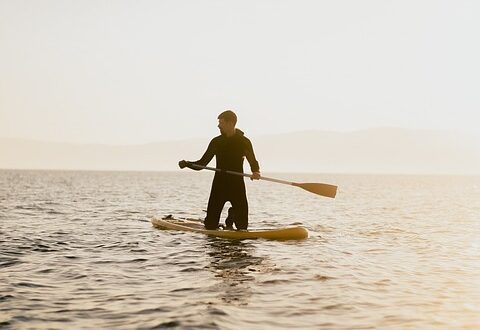Paddleboarding vs Kayaking: Which Is Better for You?
The Paddleboarding Craze
Paddleboarding has become a popular pastime in recent years. It involves standing or kneeling on a large surfboard and manoeuvring through the water using a single paddle. Many enthusiasts love it because it offers a great workout while enjoying the great outdoors.
Kayaking: Classic but Tried and Tested
Kayaking, on the other hand, has been around for over 4,000 years, dating back to ancient Inuit times. The design has been refined over the years, and it is now considered a versatile piece of equipment since kayaking can be done in various water bodies, including streams, lakes, and the ocean.
Fitness Benefits
Both kayaking and paddleboarding provide significant fitness benefits. On a simple level, it demands an active upper body lifestyle, leading to toned muscles. Core stability is crucial in developing paddleboarding success, particularly balancing. Kayaking may be more much top-body need, but it will provide plenty of stepping resistance.
The Right Fitting Gear
Appropriate fit is important for maximum functional efficiency when participating in either water sports. Mild discomfort can bring issues and turn what would have been a blissful experience into a significant distress condition. Select equipment thoughtfully and while practicing; ensure the fit of anything, especially if renting or borrowing the device.
Choosing The Right Equipment
The water sport experience is intensified to preferable suitability when one partners with the right beginning equipment. Factors such as cost-effectiveness, durability, and lasting quality should be considered. In terms of transport, sea kayaks are generally easier to handle, but keeping a paddleboard is typically less restricting, often substituting the for a kayak’s rooftop carrier overall travel ability.
Paddleboarding vs Kayaking- Which Should You Choose?
If you are searching for an exercise-intensive adventuring experience, it is likely Paddleboarding will provide the fiery human ride you seek. Meanwhile, for those looking for still water-oriented practicalities, with or without company, kayaking endows more open flexibility. Paddleboarding involves a standing or sitting-on-a-board factor. Participants generally find this a favorable physical angle, challenging and practical for cardio, body sculpting, and much more. Others may prefer the kayak, finding tangible containment when over still waters for added perceived strategic safety.
 Mind Uncharted Explore. Discover. Learn.
Mind Uncharted Explore. Discover. Learn.




